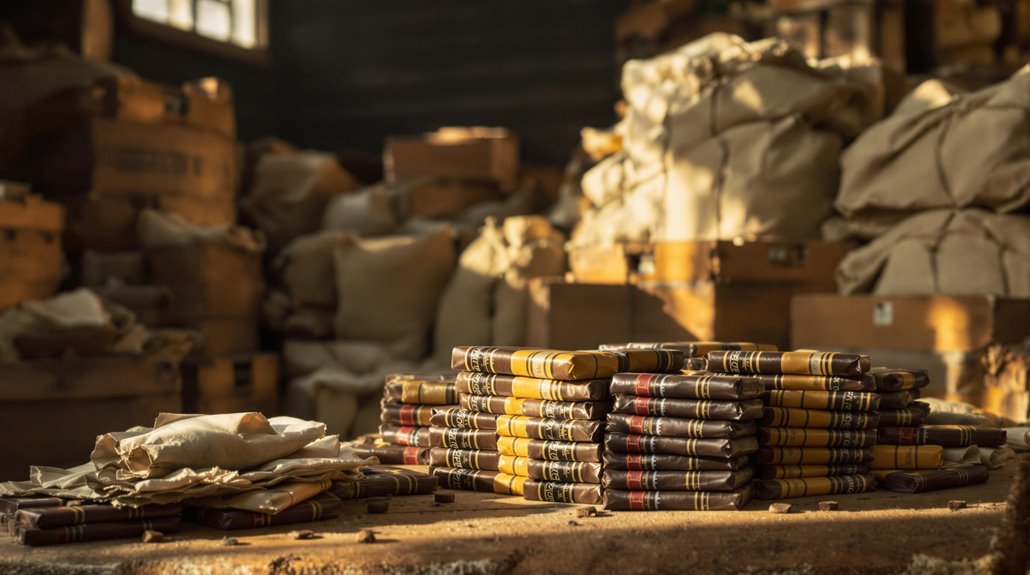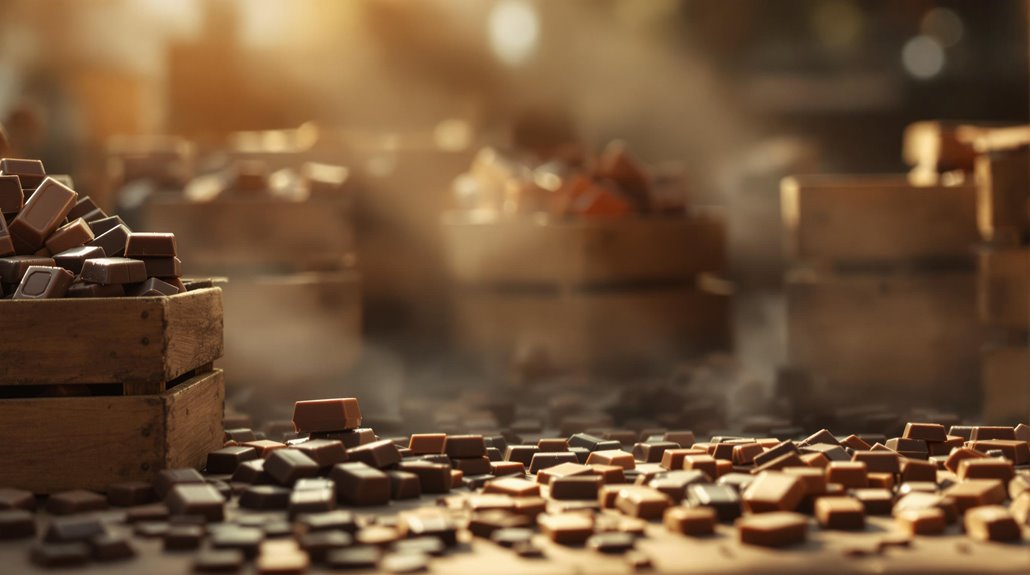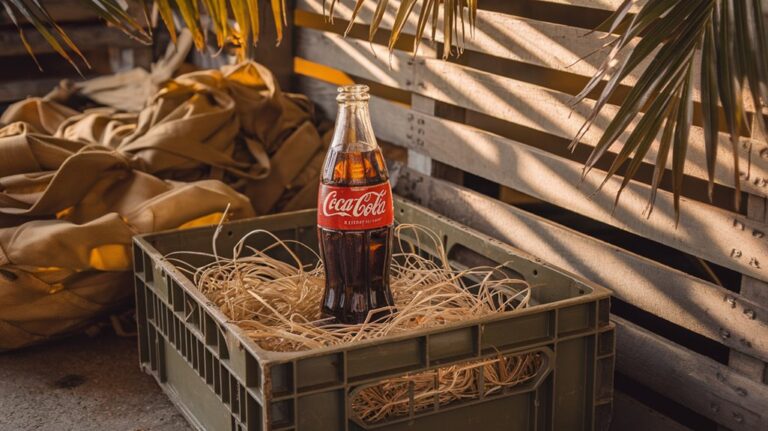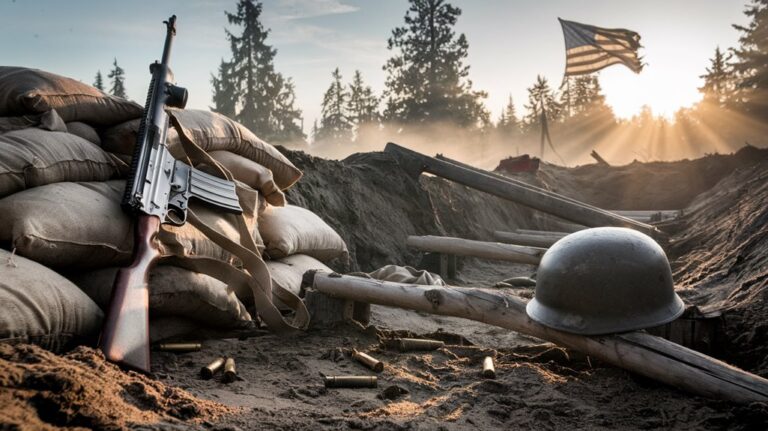WWI Boosted Popularity of Chocolate Bars
You might think chocolate bars have always been a common treat, but their path to popularity winds through the muddy trenches of World War I. When you consider how governments made chocolate a military priority, you'll find it wasn't just about satisfying sweet tooths. These portable energy sources became essential survival tools for soldiers, transforming chocolate from a luxury into a daily necessity. What happened next would revolutionize America's entire relationship with candy.
Chocolate's Journey to the WWI Trenches
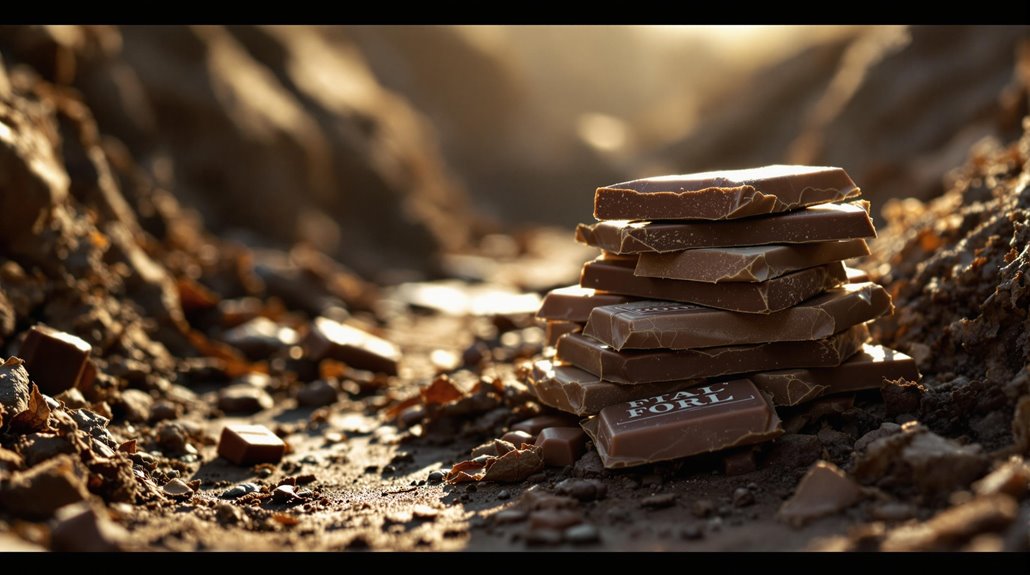
A sweet revolution transformed military sustenance during World War I as chocolate bars became essential rations for soldiers in the trenches.
You'll find that chocolate logistics played a significant role in keeping troops energized, as both British and American forces recognized its value for soldier nutrition.
The U.S. government ordered massive 20-pound blocks of chocolate that were cut and distributed to GIs, while British forces guaranteed their troops received regular chocolate rations, including special Rowntree tins from York in 1914.
The Colonies Gift Tins, sent to soldiers in France, provided a welcome taste of home that boosted morale, particularly during holidays. The candymakers donated supplies to support the war effort, responding to government requests for contributions. Cadbury contributed significantly by sending 20,000 parcels to troops on the front lines and wounded soldiers.
Military planners chose chocolate for its practicality – it was easy to transport, provided quick calories, and helped maintain troop energy levels in challenging conditions.
Military Strategy Behind Chocolate Distribution
Behind the allocation of chocolate rations lay a thorough military strategy that revolutionized battlefield nutrition. Military leaders understood that chocolate wasn't just a sweet treat – it was a tactical advantage that could greatly impact ration effectiveness and troop morale.
British Army doctors sent chocolate tins to boost soldiers' spirits during combat in 1914.
You'll find that the military's approach was remarkably practical. They needed a food source that could withstand extreme temperatures, provide quick energy, and be easily transported to the front lines.
Working with Hershey's, they developed specialized bars that packed 600 calories into just 4 ounces, while ensuring they'd remain stable up to 120°F. The strategy paid off as production ramped up from 100,000 to 24 million bars weekly.
The D ration chocolate bars were notoriously difficult to eat and had an intentionally unpleasant taste to prevent soldiers from eating them except in emergencies.
This systematic distribution of chocolate proved so successful that it became a permanent fixture in military operations, transforming both warfare and the chocolate industry.
European Sweets Shape American Tastes
While American soldiers were developing a taste for military chocolate rations overseas, European confectionery traditions were quietly reshaping the American candy landscape back home.
You'll find European influences evident in the way American candy makers began adopting sophisticated packaging and emphasizing high-quality ingredients. German immigrants had already established the concept of dedicated candy stores, while Italian newcomers introduced Americans to creamy gelato treats. This shift toward natural fruit juice became a hallmark of quality European-inspired confections. M&Ms were created specifically to solve the problem of chocolate melting during wartime.
The most significant American adaptations came from Swiss chocolate-making techniques, which promoted higher cocoa content and smoother textures.
These European traditions transformed how you'd experience candy in America, from the elegant boxes that housed premium chocolates to the natural fruit flavors in gummies.
The focus shifted toward refined tastes, subtle spices, and less reliance on artificial ingredients.
Post-War Candy Bar Revolution
Following World War I, the American candy industry exploded with creativity, producing over 40,000 different candy bars during the 1920s.
You'd find candy bar trends reflecting everything from Hollywood stars to popular dance crazes, as manufacturers competed fiercely with industry giant Hershey's.
These flavor innovations weren't just about chocolate. Manufacturers experimented with unique ingredients, including:
- Nougat in various textures and flavors
- Dehydrated vegetables for unique taste combinations
- Novel filling mixtures to stand out from competitors
The absence of alcohol during Prohibition helped fuel this candy bar revolution, as Americans sought new indulgences.
You'd spot candy bars named after celebrities like Charles Lindbergh's "Lindy Bar" and pop culture icons like Dick Tracy.
Even regional confectioners joined the movement, creating distinctive treats that captured the era's spirit.
The shortage of materials during the war led manufacturers to use foil and tin wrappers, which proved durable enough to become industry standards.
The trend began when chocolate rations became essential for soldiers during World War I, providing quick energy in the trenches.
Veterans Drive New Chocolate Market
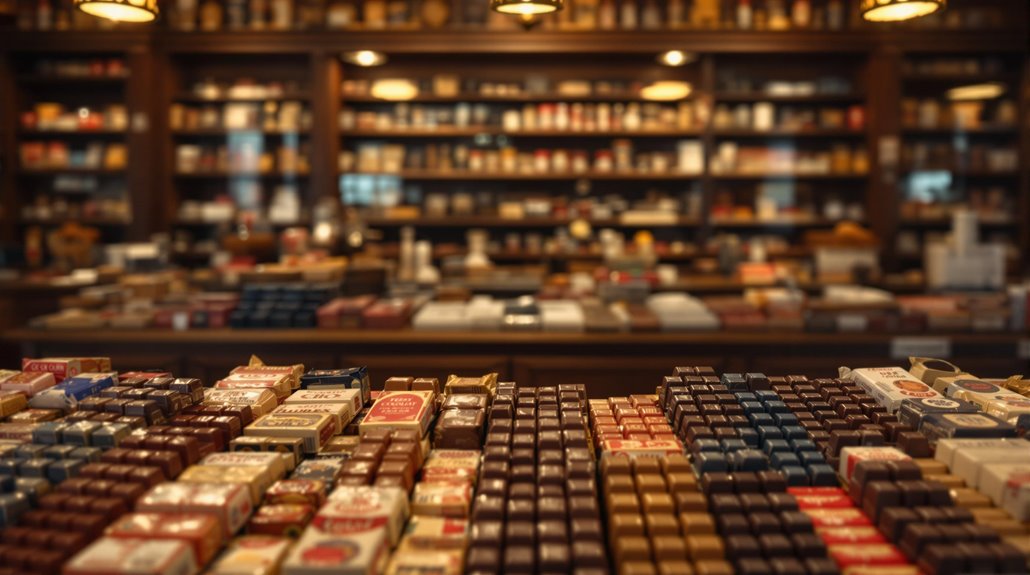
As American soldiers returned from the trenches of World War I, they brought home an insatiable appetite for chocolate that would transform the nation's candy industry.
You could see veterans' nostalgia for their wartime chocolate rations driving unprecedented demand across the country. Their chocolate cravings sparked a nationwide sensation, especially during Prohibition when Americans sought alternative indulgences.
Candy companies quickly capitalized on this trend, developing thousands of new products and targeting veterans through patriotic marketing campaigns. Soldiers were already familiar with chocolate from the 20-pound blocks they received during the war. Critical analysis of market trends helped companies strategically develop their products.
They'd experiment with innovative ingredients like nougat and dehydrated vegetables, while creating memorable names inspired by popular culture.
 doubled food prices forced many candy makers to innovate with cheaper ingredients and production methods.
doubled food prices forced many candy makers to innovate with cheaper ingredients and production methods.

